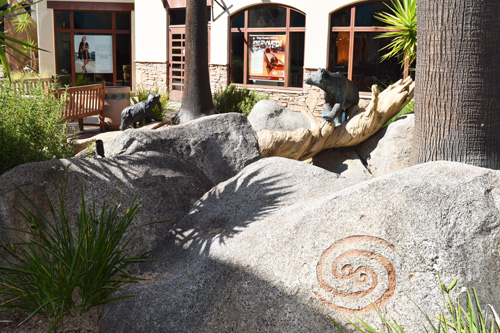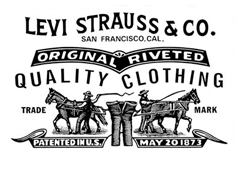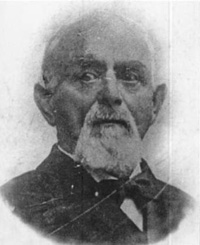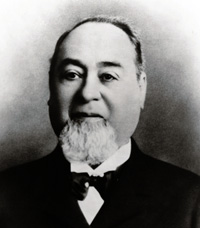
-60th in a Series-
Exit 36, East Willows Road, Viejas Indian Reservation
By Donald H. Harrison

 VIEJAS INDIAN RESERVATION, California – I grew up watching cowboys and Indians in the movies and on television. Cowboys and Indians were enemies back then, but not anymore. Especially not here.
VIEJAS INDIAN RESERVATION, California – I grew up watching cowboys and Indians in the movies and on television. Cowboys and Indians were enemies back then, but not anymore. Especially not here.
Levi’s, which today we know as “jeans,” is one of the clothing brands that many people associate with cowboys, although in truth they were invented to serve a multiplicity of laborers who earned their bread outdoors, among them, cattle ranchers, sheep herders, miners, and railroad workers. Today Levi’s has a factory outlet store here on the Viejas Indian Reservation, amid sculptures of wildlife and designs evoking earlier ways of life of the Viejas Band of Kumeyaay Indians.
The origins of the popular Levi denim work pants can be traced to Buttenheim, Bavaria, where Loeb, later “Levi” Strauss was born in 1829, and to Riga, Latvia, where Jacob Youphes, later Davis, was born two years later.

(Photo: Wikipedia)

(Photo: Wikipedia)
Strauss and Davis, both Jews, separately immigrated to the United States. Strauss arrived in New York in 1848, and went to work for his older brother, Jonas, who had crossed the ocean earlier and had established a wholesale dry goods company called J. Strauss Brother & Co. Eventually it was decided that Levi, as he was by then known, should immigrate to the West Coast to open a sister branch of the business in San Francisco. He went by way of the Isthmus of Panama.
In 1854, Youphes came to New York City, and with his tailoring skills, he found work in such far-flung locales as Augusta, Maine; San Francisco; Weaverville, California; Victoria, British Columbia; Virginia City, Nevada; and Reno, Nevada. It was in Reno where the career paths of the two men first crossed. Davis, as he was then known, purchased off-white cotton duck cloth from Levi Strauss & Co., beginning in 1870, for the fashioning of tents and wagon covers.
Off-white cotton duck cloth was just one item (or stock keeping unit as they now are called) among many hundreds that Levi Strauss & Co. supplied to small stores all over the west, including Davis’s tailor shop in Reno. After receiving goods by ship, sent by his brother and other suppliers, Strauss would put together wagon loads of such goods as fabrics, umbrellas, underwear, handkerchiefs and clothing and transport them to the small general stores then common throughout the west.
On the Levi Strauss & Co. website, the story is told about the birth of Levi’s jeans, then known as “waist overalls.”
Sometime in 1870 a female customer came to Davis’s store in Reno, complaining of a problem. Her husband, who was a large man who kept ripping his pants. She asked Davis to make a new pair of pants as strong as possible. Davis decided to fasten the pockets of some white duck pants with the same kind of rivets he used to attach straps to horse blankets.
The pants held up, and soon Davis was making them for other customers. Rivets were added to the base of the button fly as well. And eventually denim was substituted for white duck.
Davis wrote to Strauss in 1872, telling him about the popularity of his invention. He wanted to patent the process because local tailors in Reno were beginning to imitate him. But Davis didn’t have enough money to patent these new strengthened work pants on his own; he needed a business partner.
Strauss not only agreed to partner with Davis in obtaining a patent for these “waist overalls,” he invited him to San Francisco to oversee their manufacture. They began business together in 1873.
It was not the first time that Davis had applied for a patent. In the past, he visualized a steam-powered canal boat and a steam-powered ore crusher, but this was the first patent which brought him and a partner great success.
While for Davis, the manufacture of riveted waist overalls was a great preoccupation, for Strauss it was but one of several business ventures in which he was engaged. A biography written by historian Lynn Downey reports that:
He became a charter member and treasurer of the San Francisco Board of Trade in 1877. He was a director of the Nevada Bank, the Liverpool, London and Globe Insurance Company and the San Francisco Gas and Electric Company. In 1975 Levi [who preferred to be called by his first name] and two associates purchased the Mission and Pacific Woolen Mills from the estate of former silver millionaire, William Ralston, and the mill’s fabric was used to make the Levi Strauss & Co. “blanket-line” pants and coats.
He was also one of the city’s greatest philanthropists. Levi was a contributor to the Pacific Hebrew Orphan Asylum and Home, the Eureka Benevolent Society and the Hebrew Board of Relief. In 1895 he and a number of other prominent San Franciscans provided funds to build a new railroad from San Francisco to the San Joaquin Valley (a project which unfortunately failed). And in 1897 Levi provided the funds for twenty-eight scholarships at the University of California, Berkeley.
Strauss died in 1902, and Davis died in 1908, a year after selling his interest in the patent to the firm he and Levi Strauss had made famous throughout the west.
*
Harrison is editor of San Diego Jewish World. He may be contacted via donald.harrison@sdjewishworld.com